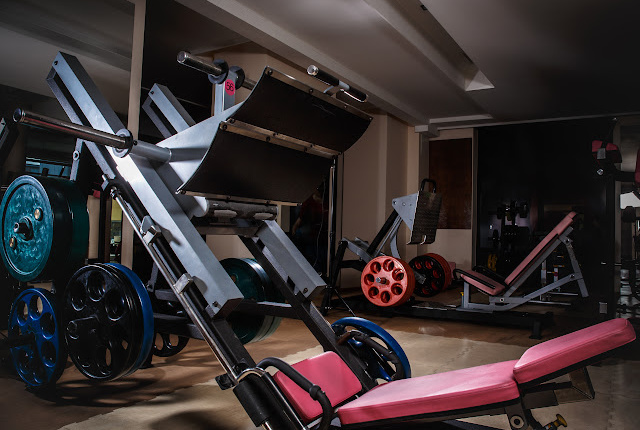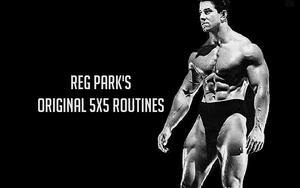
Get Max Gains With A 4-Day Push Pull Routine
Why Are Push Pull Splits The Most Productive Way To Train?
The push-pull split is likely the most versatile framework which you can use to set up your optimal training program.
You can set up a push-pull training template and plug-in literally endless exercise variations, loading parameters while optimally manipulating the fine balance between volume, frequency and intensity. With the numerous upsides to training like this, it's popularity is no surprise.
Let's dive into push-pull training, it's benefits in detail and then look at the killer workout that you should be doing!
What Exactly is Push-Pull Training?
Essentially, push-pull training groups together the major muscle groups based on the mechanics of the two fundamental movement patterns - you guessed it: pushing and pulling.
Pushing movements typically entail moving resistance from the body and pulling moving resistance towards oneself. Pushing and pulling exercises can be performed at any angle of movement: vertical, horizontal, downwards, upwards, backwards and transverse or on an angle and so on.

Push-pull split routines align exercises on one day that target all the upper and lower body pushing muscles on one day and the upper and lower pulling muscles on another day, so each workout covers half of your body.
Generally speaking, the major pushing muscles are:
- Calves
- Quadriceps
- Pectorals
- Deltoids
- Triceps
While the major pulling muscles are:
- Hamstrings
- Glutes
- Erectors
- Lats
- Traps
- Rear Deltoids/Rhomboids/Teres Major
- Biceps
Are There Benefits to Push-Pull Training?
Besides simplifying your approach to structuring your workouts, the benefits of push-pull training routines are: Optimizing Your Recovery and Preventing Injuries, Superior Training Mechanics, Flexible and Efficient Programming, Optimally Balancing Volume and Frequency.
Optimize Your Recovery And Prevent Injuries
Grouping together mechanically related movements on one day allows for more rest until the next session.
For example, hitting your chest, shoulders will involve the anterior delts and triceps, which themselves will get worked on that day as well. Splitting this up on back to back days could lead to overuse injuries.
Superior Training Mechanics
Some trainees find it easier to get motivated to perform similar movement patterns on the same day, vs as if they would be split up in other programs.
On top of this, you end up with a complementary, indirect effect of carry over which adds to overall volume by hitting the same muscles through different movements. An example would be the biceps coming into play with chins and rows, the low back muscles with rows and deadlifts and so on.
Flexible and Efficient Programming
Splitting your body into two workouts each of equal overall focus allows you to hit everything twice a week, or once if you can only train less frequently, as well as easily swapping out movements whenever you find yourself hitting a wall in progress.
Optimal Balance Between Volume and Frequency
Similar to the above point, a push-pull routine like the one below allows you to tweak it towards either volume with 2-3 training sessions a week, or towards more frequency with 4-6 sessions a week.
Focus on Hypertrophy
The program below is focused on hypertrophy to gain as much muscle as you can. The loads recommended are 70%-75% of 1RM. The reps are higher because volume = more aggregate reps = more muscle mass.
Managing Intensity
Whether you perform this routine 2-6 days a week will depend on many factors.
Aside from training limitations, recovery is the key factor, and managing intensity is a big part of this. One of the best ways to manage it is to keep at least one to to at most two "Reps in Reserve" (RIR).
Progressive Overload
Apart from keeping 1-2 Reps in Reserve, you should strive to increase the resistance of each movement slightly ever few sessions on a given exercise while maintaining proper form and lifting tempo as you can to challenge growth.
If you find over time you feel you are getting stale, feel free to swap out the movements with some comparable substitutions.

The 4 Day Push/Pull Hypertrophy Routine
WORKOUT 1: PULL 1
Trap Bar Deadlift (or Partial Deadlift) 4 x 6-8 reps
Chin-Up or Pull-Up 4-5 x one rep short of failure
Standing Reverse Cable Fly 4 x 10-12 reps
Incline Dumbbell Curl 4 x 10-12 reps
Dumbbell Shrug 4 x 10-12 reps
WORKOUT 2: PUSH 1
Dumbbell or Barbell Rear-Foot-Elevated Split Squat 4 x 10-12 reps
Machine or Dumbbell Bench Press 4 x 8-12 reps
Dumbbell Lateral Raise 4 x 10-12 reps
Tricep Pushdowns 4 x 10-12 reps
Standing Calf Raise 4 x 10-12 reps
WORKOUT 3: PULL 2
BB Rows or Chest-Supported Row 4 x 6-8 reps
Dumbbell Single-Leg RDL or Dumbbell RDL 4 x 8-10 reps
Cable Upright Row or Seated Rope Face Pulls 4 x 8-10 reps
Dumbbell or Barbell Curl 4 x 8-12 reps
Lying Leg Curls 4 x 8-12 reps
WORKOUT 4: PUSH 2
Hack Squat or Leg Press 4 x 8-12 reps
Weighted Dips or Dumbbell Incline Press 4 x 8-12 reps
Lying Dumbbell Side Lateral Raise 4 x 8-12 reps
Standing French Press Triceps Extensions 4 x 8-12 reps
Leg Extensions 4 x 8-12 reps
Note: it is preferred to use a tempo of 4,1,3,1 when training for hypertrophy with these rep ranges above. (4 seconds on the way down, 1 second pause at the bottom of the movement, two seconds to drive upwards from the bottom, and then two seconds to reset before the next rep).





